设计实现双端队列。
你的实现需要支持以下操作:
MyCircularDeque(k):构造函数,双端队列的大小为k。
insertFront():将一个元素添加到双端队列头部。 如果操作成功返回 true。
insertLast():将一个元素添加到双端队列尾部。如果操作成功返回 true。
deleteFront():从双端队列头部删除一个元素。 如果操作成功返回 true。
deleteLast():从双端队列尾部删除一个元素。如果操作成功返回 true。
getFront():从双端队列头部获得一个元素。如果双端队列为空,返回 -1。
getRear():获得双端队列的最后一个元素。 如果双端队列为空,返回 -1。
isEmpty():检查双端队列是否为空。
isFull():检查双端队列是否满了。
示例:
MyCircularDeque circularDeque = new MycircularDeque(3); // 设置容量大小为3
circularDeque.insertLast(1); // 返回 true
circularDeque.insertLast(2); // 返回 true
circularDeque.insertFront(3); // 返回 true
circularDeque.insertFront(4); // 已经满了,返回 false
circularDeque.getRear(); // 返回 2
circularDeque.isFull(); // 返回 true
circularDeque.deleteLast(); // 返回 true
circularDeque.insertFront(4); // 返回 true
circularDeque.getFront(); // 返回 4
提示:
所有值的范围为 [1, 1000]
操作次数的范围为 [1, 1000]
请不要使用内置的双端队列库。
法一:常规
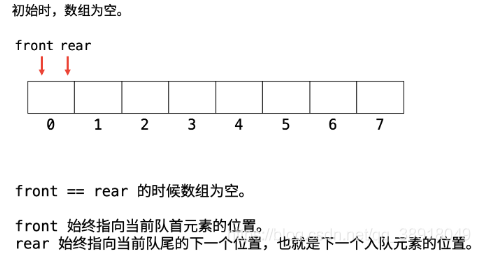
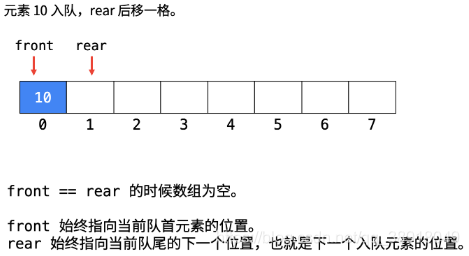
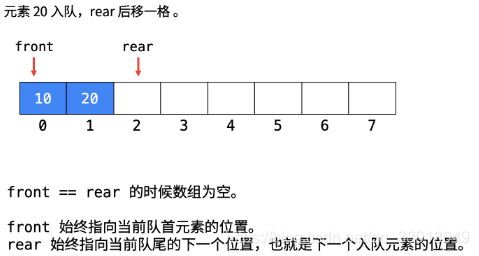
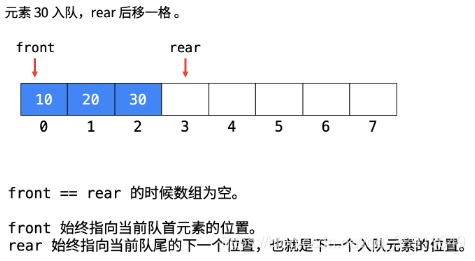
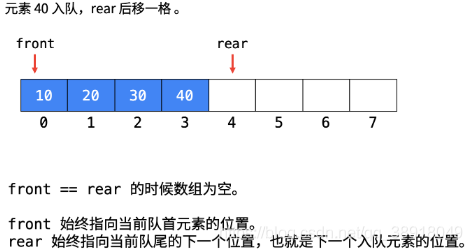
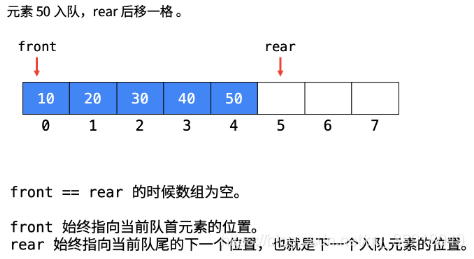
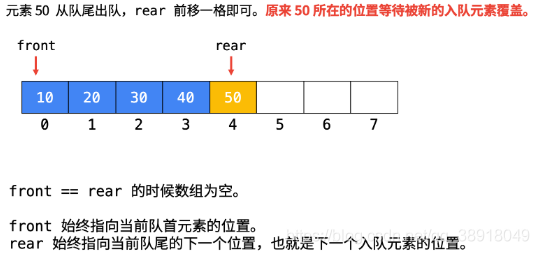
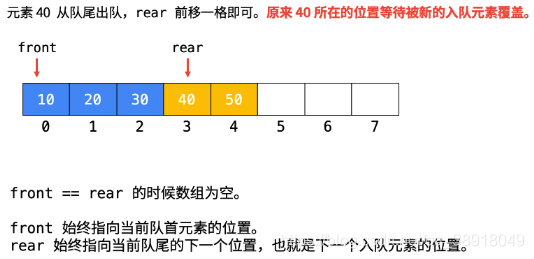
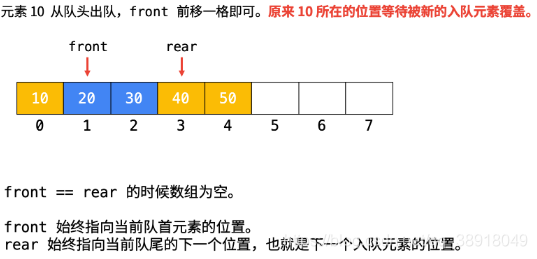
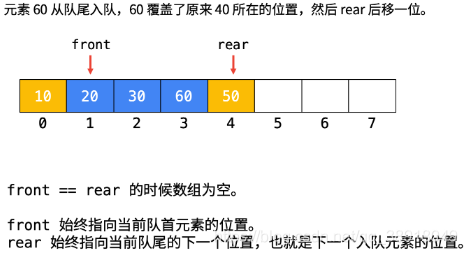
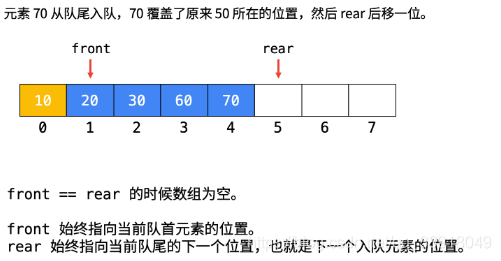
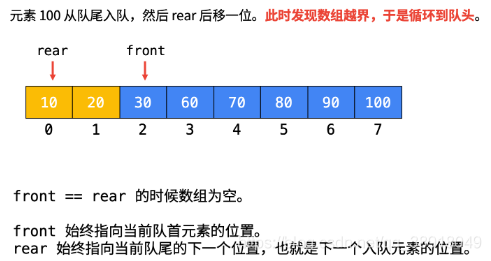
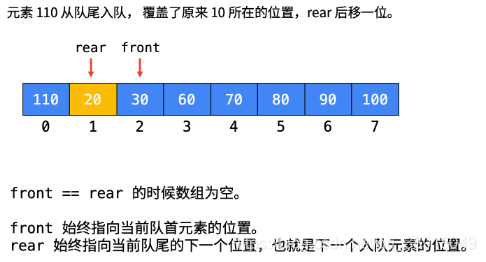
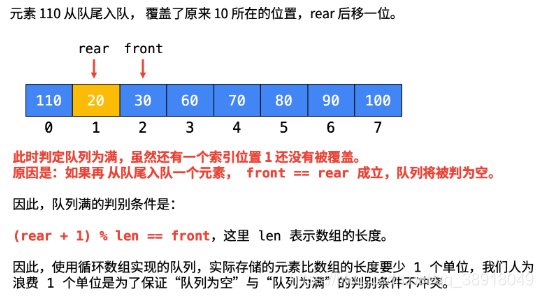
public class MyCircularDeque {// 1、不用设计成动态数组,使用静态数组即可// 2、设计 head 和 tail 指针变量// 3、head == tail 成立的时候表示队列为空// 4、tail + 1 == headprivate int capacity;private int[] arr;private int front;private int rear;/*** Initialize your data structure here. Set the size of the deque to be k.*/public MyCircularDeque(int k) {capacity = k + 1;arr = new int[capacity];// 头部指向第 1 个存放元素的位置// 插入时,先减,再赋值// 删除时,索引 +1(注意取模)front = 0;// 尾部指向下一个插入元素的位置// 插入时,先赋值,再加// 删除时,索引 -1(注意取模)rear = 0;}/*** Adds an item at the front of Deque. Return true if the operation is successful.*/public boolean insertFront(int value) {if (isFull()) {return false;}front = (front - 1 + capacity) % capacity;arr[front] = value;return true;}/*** Adds an item at the rear of Deque. Return true if the operation is successful.*/public boolean insertLast(int value) {if (isFull()) {return false;}arr[rear] = value;rear = (rear + 1) % capacity;return true;}/*** Deletes an item from the front of Deque. Return true if the operation is successful.*/public boolean deleteFront() {if (isEmpty()) {return false;}// front 被设计在数组的开头,所以是 +1front = (front + 1) % capacity;return true;}/*** Deletes an item from the rear of Deque. Return true if the operation is successful.*/public boolean deleteLast() {if (isEmpty()) {return false;}// rear 被设计在数组的末尾,所以是 -1rear = (rear - 1 + capacity) % capacity;return true;}/*** Get the front item from the deque.*/public int getFront() {if (isEmpty()) {return -1;}return arr[front];}/*** Get the last item from the deque.*/public int getRear() {if (isEmpty()) {return -1;}// 当 rear 为 0 时防止数组越界return arr[(rear - 1 + capacity) % capacity];}/*** Checks whether the circular deque is empty or not.*/public boolean isEmpty() {return front == rear;}/*** Checks whether the circular deque is full or not.*/public boolean isFull() {// 注意:这个设计是非常经典的做法return (rear + 1) % capacity == front;}}

